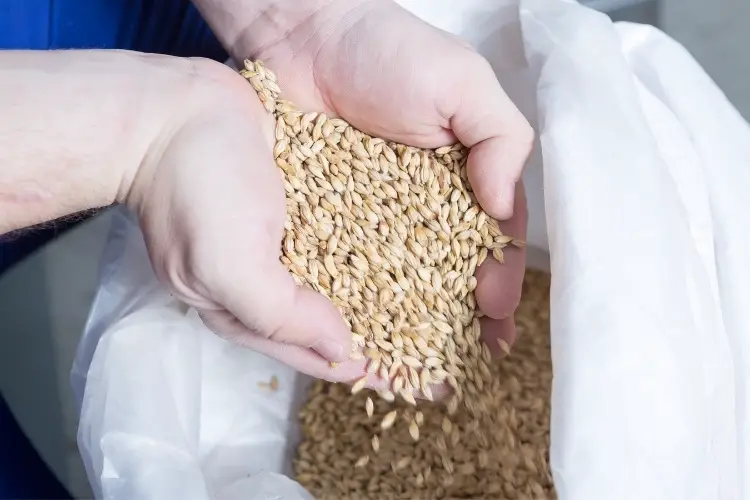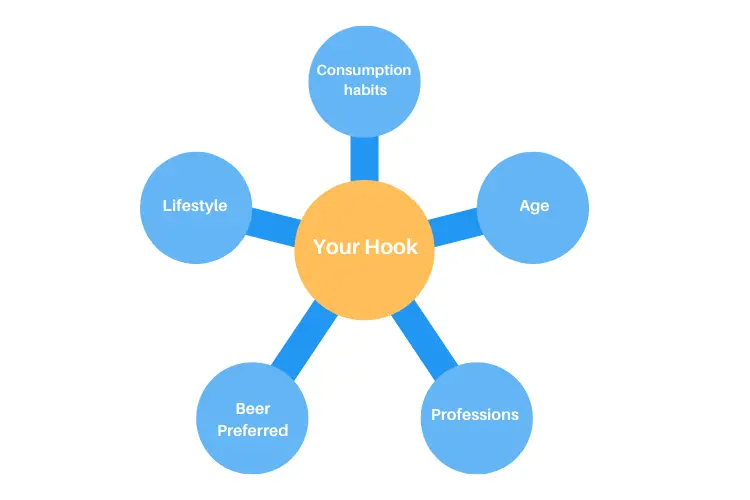That is the question many are asking now, the calamitous events of 2020 aside.
With over 7,000 craft brewers in America now, this is a huge, and not least of the puzzles, a new or growing brewer must face. I will approach this answer from my personal and professional truth, not that of the consumers. Do the research, find the data, and balance it with your mission.
Competition is a daily reality for craft brewers. Three initial approaches are as follows: quality, clarity of mission, and knowing your market niche. Create a detailed plan and balanced attack to ensure that all ops flow effectively and adjust to change as it comes.
The fact remains, what you think is good may not sell. Find out why and adjust.
Quality and Relationships
One can’t afford inferior beer in these times, not even a little.
It takes 2 microseconds for the consumer to make and acquire another choice.
Quality is more than just good. It is consistent, it is distinct, and it is superlative.
Ingredients and process

Choose good stuff. I used Briess malt almost exclusively. They are a family business run with integrity.
Once, in my first brewpub job in the mid 90’s, Roger Briess, rest his soul, the CEO came by to see me!? He was passing through and had a list of customers. I bought maybe ¾ tons a month from him, nothing.
We sat at the bar for 2 hours talking about beer, the universe and everything. It made quite the impression on a 25-year old rookie brewer.
Roger Briess’s visit does not in and of itself make quality. It makes a strong case for it. There are many artisan maltsters now, organic maltsters, brewers trying to make beer with in-state ingredients only.
It makes a difference to the consumer. Your job is to find those people.
Your signature flavor
I was a yeast-centric brewer.
That is not to say that my beer tasted like yeast.
I brewed a rotational line of Belgian-style ales and they used pure strains from White Labs.
The underlying profile of the beer was distinctive as opposed to a White Ale, brewed with American ale yeast and a little coriander.
People knew that I was true to the authenticity of it.
I did use Briess Malt, my aforementioned loyalty, and imported noble hop varieties. It was my way of telling people who made the beer. They got something from me that only came from me.
Clarity of Mission
People underestimate the importance of having a mission.
You will make good beer, that is clear. You want to sell it and make the world a better place through your interpretation of what beer should be. I have one question for you.
How do people know your mission?
Speak directly to the consumer

Most can’t tell your intent from the glass alone. They know it’s good, and may drink it again, but then what?
It is important to have a mission, expressed as your promise. Make it clear and communicate exactly what you want.
Your website, hand-outs, beer festivals, face-to-face in the bar: these are all places to directly share your mission and message.
Here is an example:
Quality beers at a premium price point give the citizen what they crave, rewards for a life well-lived. They do it to enhance an already full life. This is an absolute maxim and mission of the company.
Vague? Maybe, yet it is honest and opens the doors and mind for a discussion; it opens ears and hearts.
Brewers assume consumers know all this already.
Quite the opposite, they see you as a product on a shelf to be compared with 50 others. Short of good taste, which most have, why should they care about you?
They will care because they respond to your promise. They connect with it personally and hold the same values. Sounds a little hokey maybe, but beer culture has penetrated deeply into the American psyche.
With the depth of culture, the variety of choices, the consumers themselves look for differentiation. Help them out. Speak clearly and often.
Share with the distributors and retail sellers
The same message you convey to consumers, share with distribution managers, sales reps, retail managers, and bartenders.
They need to hear it and many of them want to.
If they can hear it from the brewers themselves, all the better.
Market Niche

Brewers young and old, new and veteran, tell me: Yes, we make beer, and our customers are everyone who drinks beer.
Can you guess the question? Phrase it any way you like but the key question is:
Who is your target market?
Yes, and “everyone” is the target market of everyone who makes anything and tells us little, and worse, gives the brewer little indication of how to capture their market segment.
It’s clear to any drinker, brewer or sentient human that there is a large beer market filled with choices, colors, and flavors, the next more appealing or eye-catching than the one before.
As a brewer, how does one make their beer stand out?
Yes, names and labeling are part of it, but only part. You can read more about labeling and branding in this article. I will impress upon you the critical importance of knowing who you want to sell to.
Who is inclined to choose your beer?
The market is a big apple pie, and no matter how good you are, and the 12 factors that give you an edge on the competition, you still get only one tiny piece of the pie. Unless you have 20 – 30+ years’ experience in the market, even money cannot buy you a big piece, at least not for long.
How do I find my brewery’s market segment?
Find your market segment by looking closely at what you offer, your mission, and your company promise. From there, line up the consumer demographics that most closely align with your products, your intent, and your message.
There are entire 2-3 year MBA programs at top Universities based on this single question. Don’t panic if it takes time to answer.
Once you know your mission and your brand promise, you begin to narrow it down.
This is just a snapshot of the factors that go into it.
- Age range, why you think so
- Professions, economic status
- Amount of weekly consumption habits, and locations
- Styles of beer preferred, what they drank before discovering your brand
- Lifestyle and interests
- Your hook, how are you interfacing with their shared value
One historic market example
I built and operated French Broad Brewing Company from 2000 – 2006. I will share what I learned about my market.
In 2000-2007 there were still only 5-6 breweries in the Asheville area though there was an abundance of Craft Beer to choose from.
I came out of the gate brewing lagers and Belgian-Style Ales. This was not initially a popular choice. At this time, few people knew much about either of them.
We had an antiquated law in NC until 2005 requiring beer to be 6% ABV or less. Most Belgian beer is over 6% and lager beer was still nascent in the local beer consciousness.
Many of the following observations were taken when we opened the tasting room in 2004. We featured home-grown live music. For the first time, I got to meet my customers face-to-face. I had been exclusively a draft beer packager. I did meet some at beer festivals but hadn’t much time to connect.
- Age range: Initially, I missed a lot of the 21-26 year old beer guzzlers as they had a taste for Pale Ale. My customers were in the 30-45+ age range and had mellowed a bit. Our ESB later drew them in.
- Professions, economic status: Well, they ran the gamut, we had some blue collar folks, but also artists, musicians (connected to our performance venue), and an eclectic professional crowd, IT, design, more creative things, and some totally ordinary.
- Amount of weekly consumption habits and locations: Our tasting room was a small room holding about 40 people, and we closed at 8. Regulars came in 3-4 nights a week, had a pint or two and took a growler home. If the music was particularly special, they would stay till closing.
They drank likely 6-12 beers per week, give or take. - Styles of beer preferred: what they drank before discovering your brand: Many had traveled, at least across state lines. They knew what an Abbey beer was, or a North German Pilsner. They liked maltier beers than bitter ones, milder beers, than punch-you-in-the-face strong ones. We did have a Wee Heavier Scotch Ale, and some Belgians got stronger as the law changed.
- Lifestyle and interests: People are eclectic so this will require some latitude. The arts, music, social and environmental consciousness. Traditional values in a lifestyle sense, not a 2nd amendment FREEDOM sense (gun owners welcome). We were travelers and globally conscious.
- Your hook, how are you interfacing with their shared value: Music was a great source of energy for us, and our. Asheville is a musical town. Through music, you reach the emotional center of people. If people touch that intuitive well-being inside themselves while having one of your beers, it will change them.
Music has great epistemic consumer value. This drives the consumer’s quest for knowledge, knowledge of what, well anything, the point being it’s an emphatic emotional connection to your product. They ride the rails with you rain or shine, high or low, good times and bad.
All this said, there was everything in-between. These are observations by which you can do your research and define your metrics.

Each of these aspects could and should be drawn out in paragraph (or research paper) form, visual, verbal, aural, and 3-dimensional; discussed with the team, debated, argued, and written out again.
As needed, seek professional help outside the company as marketing and sales sometimes need a boost, beyond the skillset and means of your team.
⭐ KMB Consulting is certainly available to you.
A crowded market means opportunity
Remain steadfast and undaunted. There is competition and always has been.
Focus on your mission and your goals. Brewing is an artisanal craft blended with careful thought and well-planned metrics.
Take calculated risks and be creative.
There are consumers there with you in their heart and commitment, they may just not know it yet.

